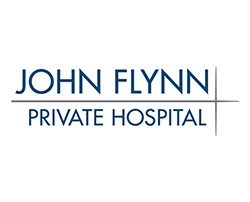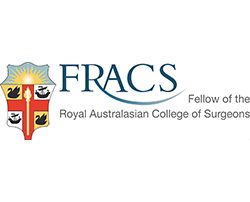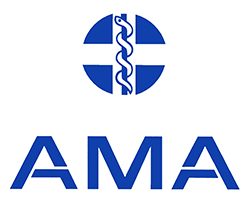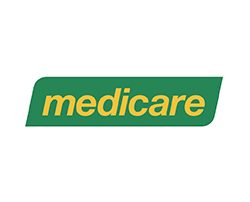Vascular Surgery | SERVICES
At our Vascular Surgery, we specialise in open and minimally invasive treatments of both arterial and venous disorders. Our practice aims to improve the quality of life of our patients by applying state of the art diagnostic and remedial techniques precisely and appropriately. We take pride in our ability to convey treatment options compassionately, respectfully and with language that is always accessible to our patients.
We are based in Tugun and service the South East corner of Queensland, Tweed Heads and the Northern Rivers areas of NSW.
Our Services

Peripheral Artery Disease
Peripheral artery disease is a condition where narrowing blood vessels cause poor blood flow to the limbs or body extremities. Fatty deposits and calcium can accumulate on artery walls and can worsen with age, the presence of diabetes and lifestyle issues such as smoking.
Treatments
Quitting smoking and adopting lifestyle changes that to include exercise and healthy eating can reduce the negative effects of Peripheral arterial disease, however for more severe cases surgery may be needed.
Angioplasty is a minimally invasive procedure that involves inserting a specially designed ‘balloon’ into the artery to expand it, increasing blood flow. In some cases a stent may also be required to hold the artery open.

Carotid Artery Disease
Carotid artery stenosis refers to a condition where blood vessels specific to the neck become narrowed and can reduce blood flow between the heart and brain.
The narrowing can be caused by the accumulation of cholesterol and lifestyle related factors including ageing.
In some cases blood clots can form in the neck area, become dislodged and travel to the brain leading to stroke.
Treatments
Medication and blood thinners can reduce the severity of Carotid Artery Stenosis, but often surgery is required. In such cases, cartoid stenting and physical removal of plaque by a procedure called Carotid Endarterectomy or improvement of blood flow by Angioplasty may be needed.
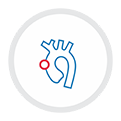
Aortic and Peripheral Aneurysms
Arteries can become weakened, mis-shaped or enlarged causing complications to sufficient blood flow throughout the body. Aneurysms commonly occur within the Aorta, the largest blood vessel in the body, but they can also happen in other arteries.
Treatments
A most substantial treatment involves surgical removal of the aneurysm and its replacement with suitable healthy tissue grafted from a different area of the body.
A less invasive procedure known as Endovascular Repair, involves the use of catheters and minimally invasive guides to position a stent within the damaged blood vessel.

Varicose Veins
Varicose veins most commonly don’t cause any symptoms other than those associated with reduced self esteem since they are commonly regarded as cosmetically unattractive. However in some cases they can cause pain or irritation and can be indicative of underlying circulatory dysfunction.
Treatments
While varicose veins can’t be cured, their negative effects can be minimized with compression stockings or through surgical removal or closing of the damaged vessels.
Treatment involves compression stockings, exercise or procedures to close or remove the veins. Some of the procedures used to accomplish this include:
- Vein stripping: Physical removal with the most non-invasive procedure possible.
- Radiofrequency Ablation: Targeted removal of tissue with the use of radio frequency.
- Laser Therapy: focusing a beam of high energy light to target specific areas of the skin.
- Ambulatory phlebectomy: Small incisions in the legs allow removal of some of the more problematic superficial veins.
- Sclerotheraypy: The injection of salt water which can cause the varicose veins to break down or whither away.

Pelvic Venous Incompetence
Pelvic Venous Incompetence (or Insufficiency) refers to a painful condition where blood flow and direction within pelvic veins are adversely effected because of damage or deformation. The condition can also occur in women where their ovarian veins are negatively impacted.
Treatments.
Sclerotherapy or emobilization of the damaged veins can provide some relief and a more substantial treatment involves surgical removal of the damaged veins.

Deep Vein Thrombosis
(DVT)
Deep Vein Thrombosis refers to a blood clot usually within the deeper veins of the leg. This is a serious condition because of the possibility of the blood clot becoming dislodged and travelling to other parts of the body. Some of the signs include, leg pain, swelling, an unusual sensation of warmth, skin discoloration, pain or discomfort when the foot is bent.
Treatments
Treatments for DVT can include medication aimed at dissolving the clot, compression stockings and lifestyle changes to diet and exercise aimed at reducing the likelihood of additional clots forming.
Surgical options include Thrombolysis where special compounds are injected into the vein by use of a catheter with the purpose of dissolving the clot.
In some cases physical removal of the clot is needed by a surgical procedure called Open thrombectomy.

Foot and Leg Ulcers
Foot and leg ulcers are sores that don’t heal easily or persist for long periods of time and in spite of treatment. They can also re-appear after successful treatment and usually stem from underlying cardiovascular dysfunction.
Treatments
Treatments range from the use of blood thinners to increase circulation and the wearing of compression socks or leg wraps and special orthitic shoes. Appropriate wound care is a major consideration in the treatment of foot and leg ulcers and in some cases surgical removal of the damaged or infected tissue is required.

Dialysis Access Surgery
Dialysis Access Surgery is part of the haemodialysis intervention for patients suffering from kidney failure. In the event that blood has to be filtered with the use of a dialyzer outside the body, the necessary channels for this to occur must first be created.
This is usually a surgically created vein that is used specifically for each haemodialysis treatment, allowing blood to flow from the body into the dialyzer for filtering and then returning to the body.
Request an Appointment
Once you have received a referral from you GP, please contact us to request an appointment on:
07 5598 0288
Alternatively, if it’s now after hours please visit our contact page to send us a message or to request an appointment.

